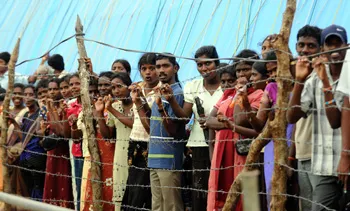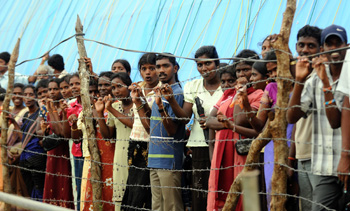Today marks the 100th day of J.S. Tissainayagam’s 20-year prison term. Tissainayagam, known as Tissa, was convicted of “terrorism” charges for articles documenting human rights abuses by the Sri Lankan military, as well as the difficult conditions faced by Sri Lankans displaced in the nation’s long war. His sentence was a dire warning to other journalists who would dare be critical of the government. They are right to be concerned.
In the years since Mahinda Rajapaksa has held high office in Sri Lanka—as prime minister in 2004 and then as president since 2005—nine journalists have been murdered with impunity. According to CPJ data, Sri Lanka has the fourth worst impunity record in the world, behind only Iraq, Sierra Leone, and Somalia. And over the years CPJ and other journalist support groups have been handling a steady flow of requests for assistance while threatened reporters seek either temporary refuge or permanent exile.

Not many international journalists are singled out by a U.S. president. But this year, on World Press Freedom Day in May, President Barack Obama cited the prosecution of J.S. Tissainayagam as “emblamatic” of press freedom abuses worldwide.
The European Union has continued to bring targeted pressure on the Sri Lankan government: If the government wants to retain preferential trade tariffs, the EU said, it will have to ensure media freedom and release the 300,000 people, almost all of them Tamils, it is holding in camps. The issue is still in the air, but the government has started to shift some of the hundreds of thousands of Tamil war refugees to slightly better conditions. On Wednesday, Robert Blake, U.S. assistant secretary of state for South Asia—and the previous ambassador to Colombo—told reporters that he saw evidence of progress when he visited the site where about 100,000 displaced civilians still live.
